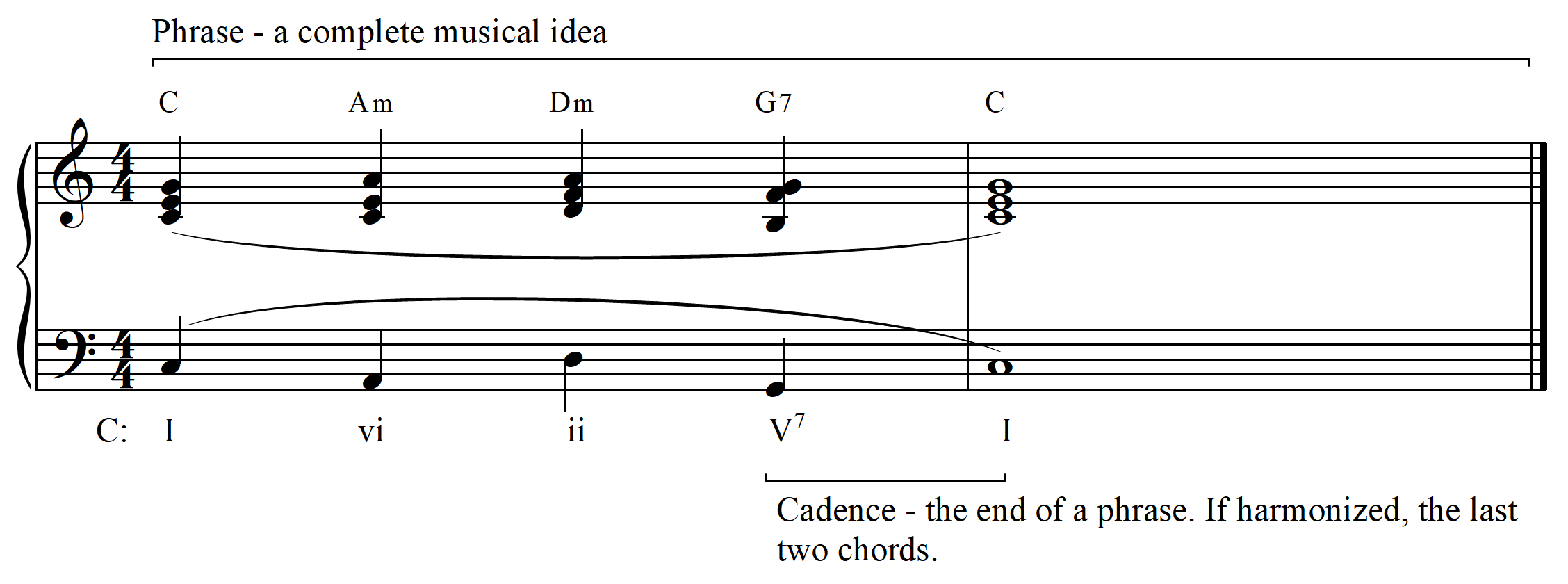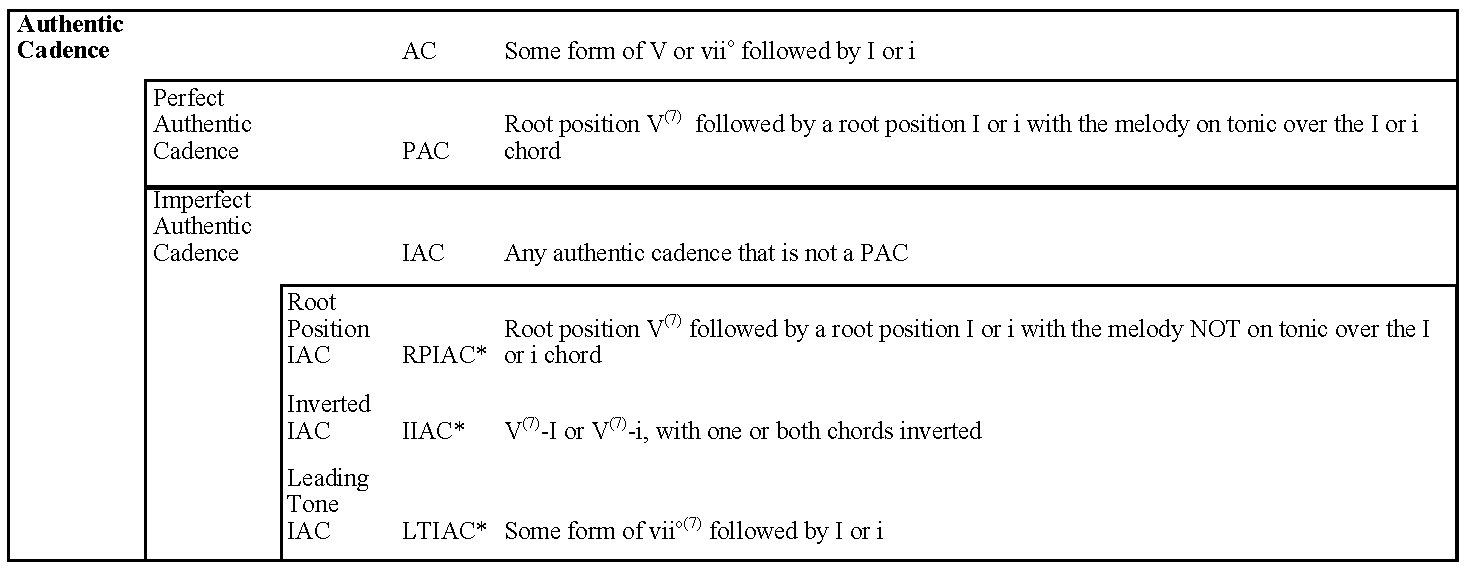Handy Dandy Guide to Cadences
Click here to download a condensed PDF version of the "Handy Dandy Guide to Cadences"
What's a cadence? A cadence is the ending of a phrase. Cadences are like the periods at the ends of sentences in English - except music does not use periods (at least not the kind in English). It also does not use commas, semi-colons, colons, or any of the numerous symbols that tell use when an English phrase is done. So how do we tell when a phrase is completed? Melodies and rhythms can be constructed in phrases, but it's not always so easy to tell exactly when these kinds of phrases end. (This can be quite subjective.) But if there is harmony present, it's much easier to find the end of a phrase because the cadence consists of the last two chords of the phrase. (A phrase, in case you're wondering, is a complete musical idea, which can be a melody, harmony, or rhythm.) Here's an example to clarify these concepts.

Harmonic cadences come in four broad categories:
- 1. Authentic - the superhero of the lot!
- 2. Plagal - sounds a bit churchy.
- 3. Half - half finished.
- 4. Deceptive - we have been fooled!
The handy dandy guide below lists the cadence names, the abbreviations (some are not standardized, marked with an asterisk), the final two chords for each broad category, and some subcategories that are frequently found. These are listed in order from the strongest at the top to the weakest at the bottom. Just like when constructing a building, the foundation must be strong, while other parts do not necessarily have to be as strong. The relative strength and weakness of each type of cadence is helpful when building larger structures made of two or more phrases.


This is a perfect authentic cadence, the strongest and most complete of all. There are weaker versions too - the imperfect ones. If a perfect authentic cadence walked into an Old West bar, replete with gun holsters, the imperfect cadences would all run for the doors. Of course, it's not really this way with music, but it's helpful to know that perfect is the strongest, and imperfect ones are slightly weaker. They all beat the rest of the bunch below however, which are weaker yet.


The plagal cadence is sometimes called the "Amen" cadence because it has the "churchy" ending.


This cadence perhaps gets its name from sounding like things are not quite finished - half done.


This cadence banks on the power of the V chord, which is almost always followed by the tonic chord. (After all, the V chord is the "dominant" one, built on the dominant scale degree.) It comes as a bit of a surprise when the V chord is followed by vi (or VI) because of this strong expectation. The V chord sets us up to expect tonic, but deceives us by going to VI (or vi) instead.
For More Detail
Wikipedia has a lot of detailed information about music theory in general, including this page about cadences: https://en.wikipedia.org/wiki/Cadence
